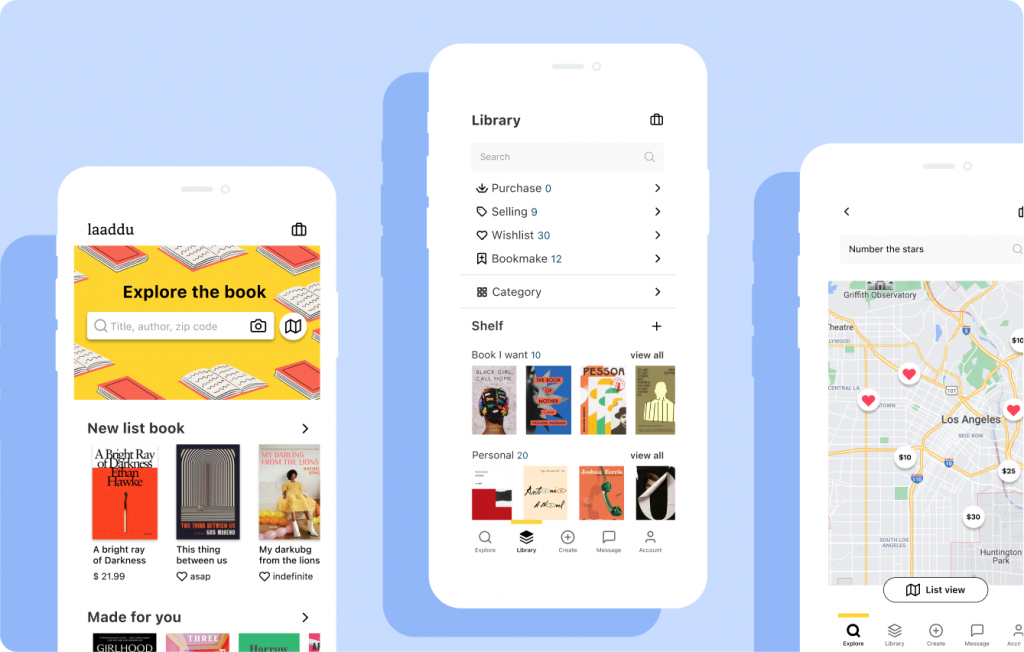Laaddu
Laddu is a startup that started as a p2p book lending app and attempts to solve most of the problems surrounding books eventually. I was hired to lead another round of iteration.
The product had already been through more than two ideations but still couldn’t touch the user’s heart. The stakeholder wants to know how it can be improved, and eventually what else can be done. I took responsibility for assembling the strategy, defining the business problem, discovering the market opportunity and finding what the user needs.
Laaddu
p2p book marketplace platform
Laddu is a startup that started as a peer-to-peer book lending app, aiming to solve issues related to the book industry. I was brought on to lead another round of iterations.
As the company struggled to capture the attention of users despite undergoing multiple iterations. The stakeholders were eager to know how to improve the product and what other actions could be taken. I took responsibility for developing a comprehensive strategy that addressed the core business problem, identified the market opportunity, and gained an understanding of the user’s needs.
What I do
Platform
ios app
Location
Remote
Team
Founder, engineer
Status
Delivery, test, continue expanding

What I do
Team
Founder, engineer
Platform
ios app
Location
Remote
Status
Delivery, test, continue expanding
Overview
Background
Laaddu’s founder, a book lover with a passion for reading, faced several issues related to books. She struggled to borrow the books she wanted from the library, had a limited budget to purchase books on Amazon, and didn’t know what to do with finished books. Believing that there were others like her, she founded Laaddu with a mission to solve common problems faced by book lovers.
Problem
Initially, the stakeholder lacked a clear product goal or vision. She integrated features and concepts from Little Free Library and Goodreads to develop a solution that addressed her problems.
The current app allows users to locate available books nearby, track their reading progress, and connect with others who have the books they need. However, the product experience is not seamless, and the stakeholder is seeking to understand how to improve it and explore other possibilities.
Goal
Solution
A peer-to-peer marketplace that provides book management software as a service (SaaS). It will enable individuals to organize and share their book collections and connect with others selling books they desire in their area. Initially, the platform will launch with an iOS app and then expand to a website.
Impact
Background
Laaddu’s founder is a book lover, she has a huge passion for reading and she has lots of different problems around books. For example, she is struggling to borrow the books she wants in the library, where she also doesn’t have the budget to buy all the books she wants for over $500 on amazon. She also has a number of finished books that she doesn’t need anymore but is not sure what she can do for them. She believes there are some other people out there just like her, so she creates Laaddu and under the mission to solve the problems for books.
Problem
Early on, the stakeholder didn’t have a clear goal or vision for the product. She combined features and concepts from Little Free Library and Goodreads to create a solution she felt solved the problems.
In the existing app, users can find available books near them, track their reading progress, and connect with people who have the book they need. However, the product doesn’t seem to have a seamless experience and the stakeholder wants to know what it is, how it can be improved, and eventually what else can be done.
Goal
Goal
Solution
A peer-to-peer marketplace platform for people to organize their books, and find each other when people are selling the books they want by location. It starts with an ios app and will eventually be available on the website.
Outcome
☟how did we get to the solution?☟
☟have more time?☟
Next steps
Learning
What I will do differently
Because of budget, we decided to use an unmonitored usability testing platform. When I tried to use it for a low-fi prototype for some initial feedback, I thought I explained enough for the situations, but I am not able to get the feedback we want. One thing is people on the platform didn’t have experience with low-fi tests before and because it is low-fi so it will require lots of guidelines, no matter how detailed I explained it.